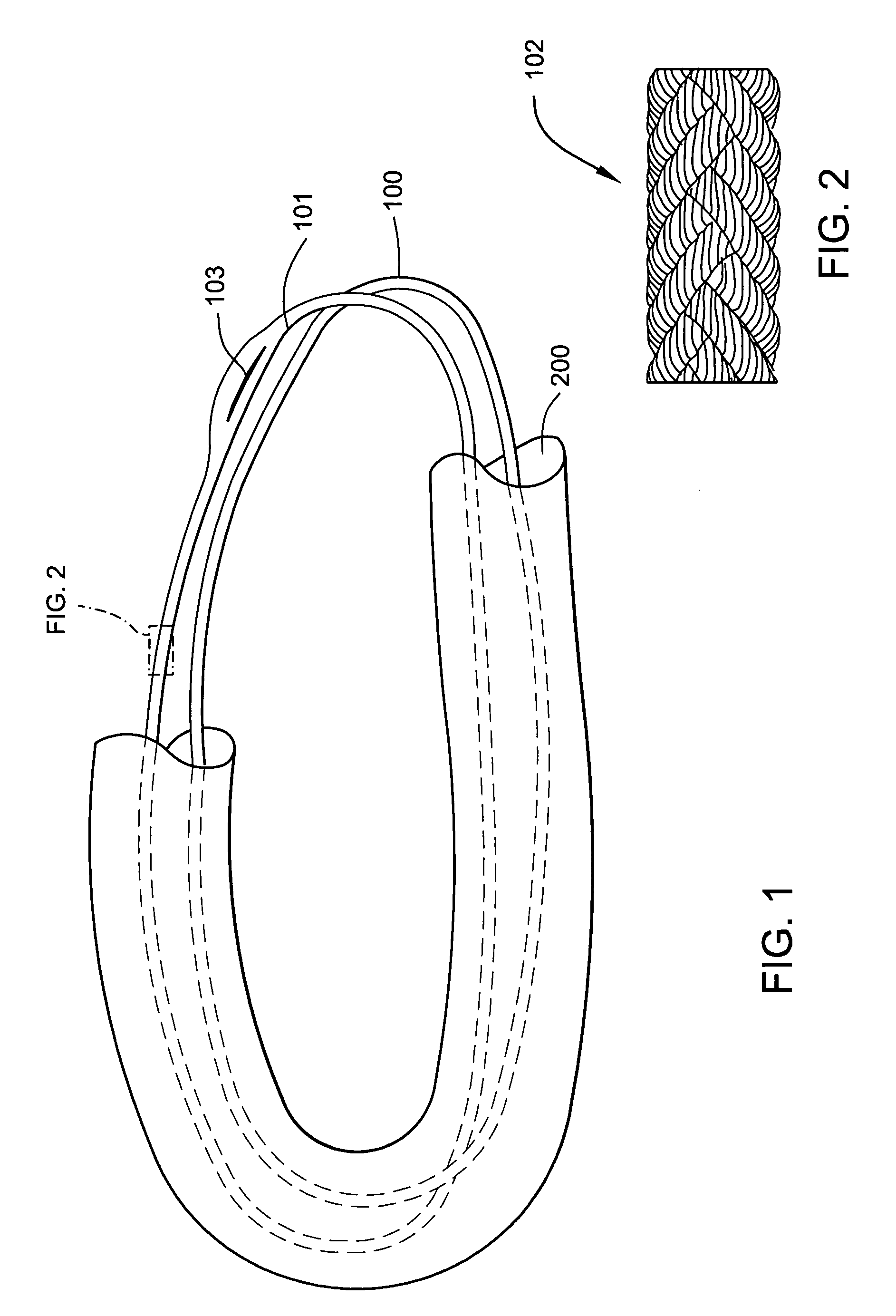Roundsling
a sling and rounding technology, applied in the field of rounding, can solve the problems of high variation of tenacity of slings with less than 11 turns, low efficiency, and relatively high number of turns, and achieve the effect of improving efficiency, reducing variation of tenacity, and high tenacity
- Summary
- Abstract
- Description
- Claims
- Application Information
AI Technical Summary
Benefits of technology
Problems solved by technology
Method used
Image
Examples
example 1
[0034]A roundsling core is made of a laid rope with three strands of HMPE fibres (construction 3×24×3 / 1760 dtex; Dyneema® SK 75) by making an end-to-end connection after 22 parallel aligned turns of rope around two reels, with the tucked splice according to the description above (of 8-4-4 construction; that is having 8 full tucks and tapered in two steps of 4 tucks). The splice passes over the parallel turns. Dyneema® SK 75 is a 1760 dtex HMPE continuous filament yarn with a yarn tenacity of 35 cN / dTex (a product of DSM High Performance Fibers, NL). After covering the core with a standard polyester cover the roundsling was tested and turned out to have a tenacity 15±2 cN / dtex; that is an efficiency of 43%.
example 2
[0035]A roundsling of 23 turns of 3×7 / 1760 dTex, (Dyneema® SK 75 1760 dtex yarn) coated with Lago 45 and spliced with a standard 8-4-4 tucked splice turned out to have a tenacity of 21 cN / dTex. The efficiency of this roundsling is 60%.
examples 3 – 5
EXAMPLES 3–5
[0036]Example 1 was repeated, whereby the number of turns was varied. Table 1 shows that the efficiency increases with a decreasing number of turns.
[0037]
TABLE 1numberTenacityExampleof turns(cN / dTex)Efficiency31117.149%4618.252%551954%
PUM
 Login to View More
Login to View More Abstract
Description
Claims
Application Information
 Login to View More
Login to View More - R&D
- Intellectual Property
- Life Sciences
- Materials
- Tech Scout
- Unparalleled Data Quality
- Higher Quality Content
- 60% Fewer Hallucinations
Browse by: Latest US Patents, China's latest patents, Technical Efficacy Thesaurus, Application Domain, Technology Topic, Popular Technical Reports.
© 2025 PatSnap. All rights reserved.Legal|Privacy policy|Modern Slavery Act Transparency Statement|Sitemap|About US| Contact US: help@patsnap.com


